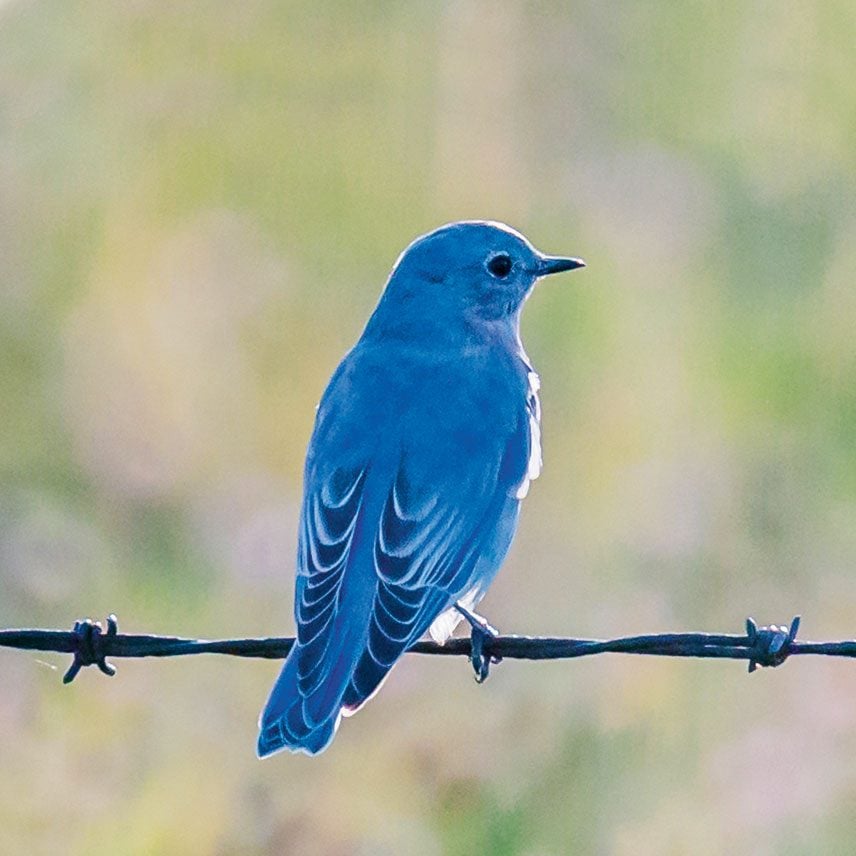
Saving Canada’s mountain bluebird
For as long as I can remember, birds have fascinated me. From my pre-teen years, rafting on a country slough, to recent bird expeditions to Columbia and Australia, I have sought out their pleasure.
There are three species of bluebirds, all found in North America: the eastern, western and mountain bluebird. The mountain bluebird breeds in the west, from the western states up through Canada and parts of Alaska and across the Rocky Mountains. Like many other birds, female bluebirds are much less colourful than the males. They often look more grey or brown than blue, with the exception of the tips of their wings and tails. Henry David Thoreau wrote, “The bluebird carries the sky on his back.”
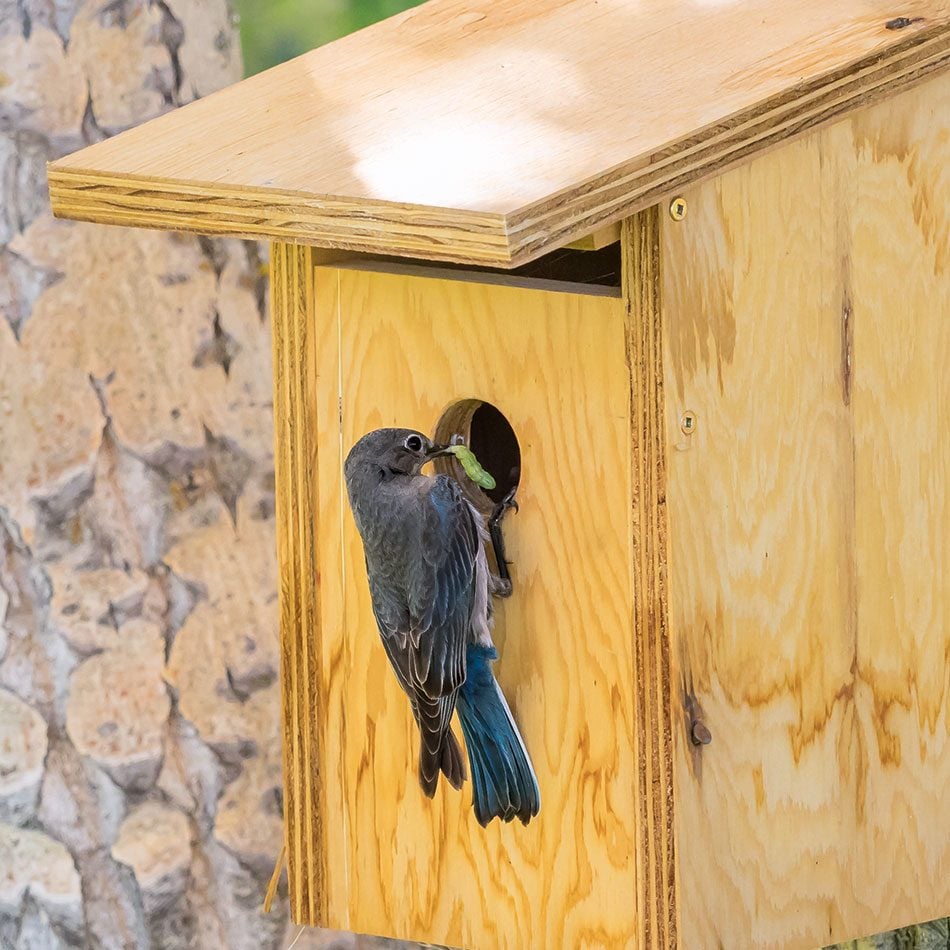
The problem with mountain bluebirds
The bluebird’s biggest problem today is a serious housing shortage. They can be extremely fussy about where they build their nests. They won’t nest in cities or crowded suburbs, and they dislike forests or deep shade. Instead, they prefer open spaces with not too many trees or buildings around them. They nest in small enclosures or holes, and love rotted, wooden fence posts, dark hollows in decaying trees, knotholes and abandoned woodpecker holes. Of course, not every natural nesting hole is gone, but those that remain are often taken over by more aggressive birds, such as the English house sparrow and the European starling.
We restrict the entrance hole on our bluebird boxes to 1-1/2 inches to prevent starlings from nesting, but only by close monitoring can we prevent house sparrows from moving in! I really believe that bluebirds are now dependent on our help if they are going to survive.
This marsh is Nova Scotia’s best-kept bird watching secret.
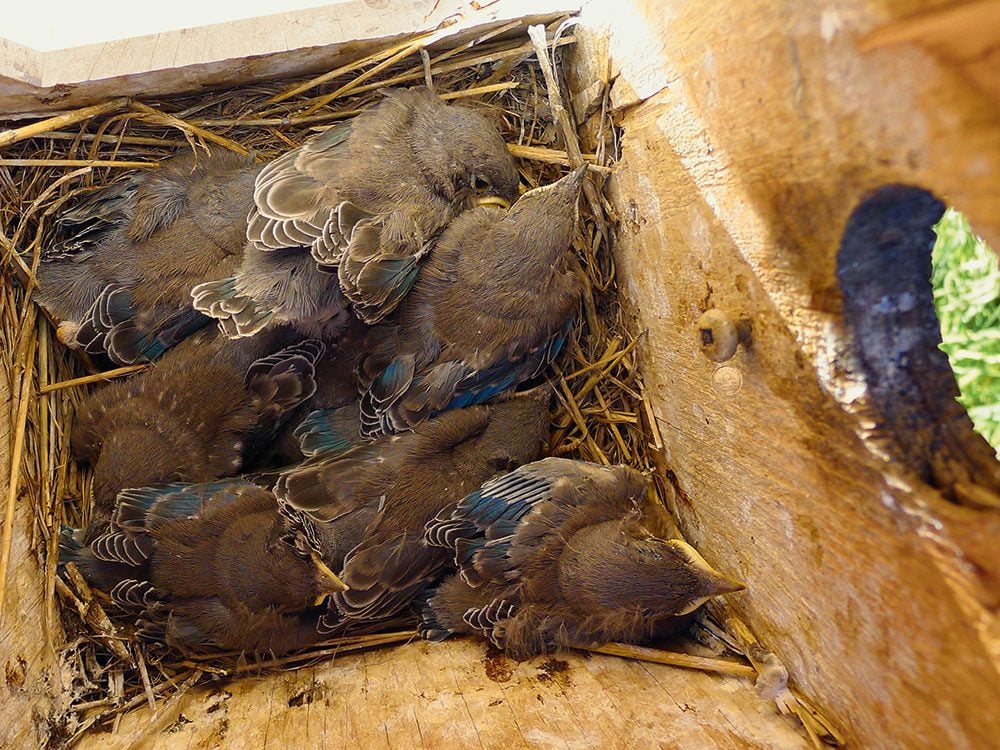
A lifelong passion for the mountain bluebird
Thirteen years ago, I was bird watching in the countryside east of Olds, Alberta, and was fortunate to meet an elderly gentleman who was monitoring his nest-box trail. Don Stiles introduced me to what would become a lifelong passion. He was generous enough to let me take over 25 boxes of his, mentor me in the skill of banding the adults and young, and educate me on the importance of trail maintenance and proper record-keeping methods. After much study and careful monitoring, I received my federal permit to band mountain bluebirds and American tree swallows. Like Don, I belong to the Calgary Mountain Bluebird Trails Conservation Society.
Today, my trail has grown to more than 480 boxes, and runs 250 kilometres round trip, allowing nature to fledge more than 800 bluebirds and 1,400 tree swallows each year. Each location has two boxes to allow both bluebirds and tree swallows to live in harmony. Statistics from my banding efforts are entered into a North American-wide database that allows biologists and ornithologists to gain a better understanding of the future of some of North America’s most beautiful birds.
Even the Big Smoke has something to offer avian enthusiasts. Here are Toronto’s best bird watching spots.
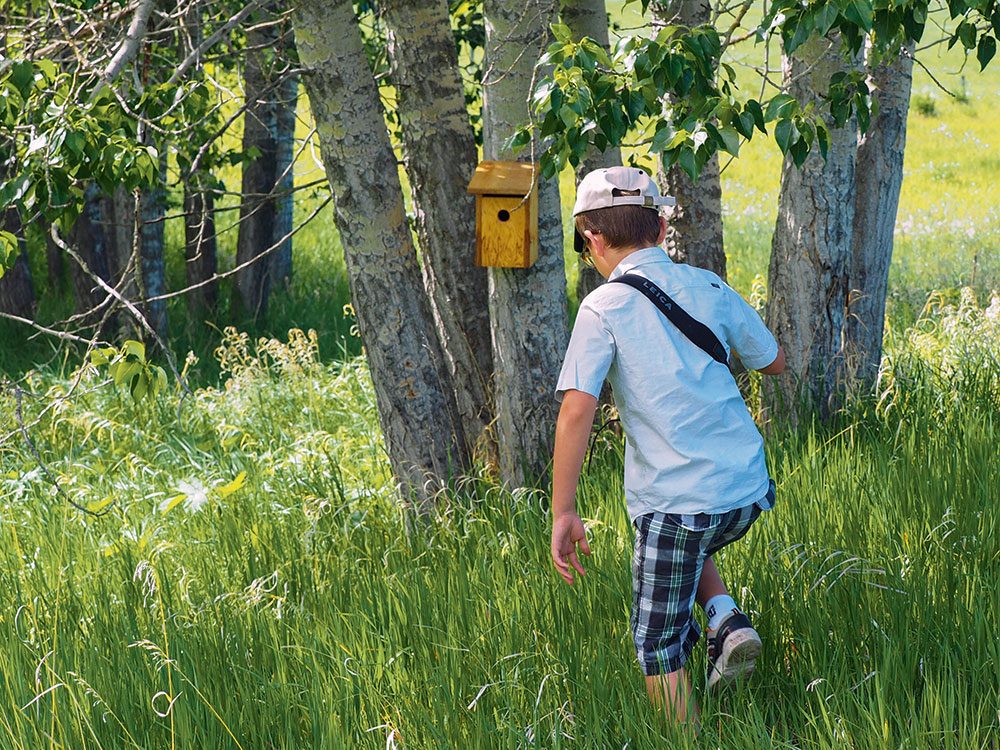
Monitoring the boxes on my mountain bluebird trail
Conservation and the satisfaction from interacting with nature allows me to slow down and enjoy the sights and smells of this beautiful country we call Canada.
Spending time on my trail allows me to witness many other incredible events as well, including viewing newborn deer and moose, the first crocuses blooming in spring, the constant serenade of the male American robin, and the intoxicating fragrance of the silver willow. Nature can provide a nice contrast to the stress-filled lives some of us lead.
Monitoring my trail, which includes cleaning the boxes in spring and fall, and tracking the number of nests, eggs, young and fledglings, has brought many highlights. Recovering adult bluebirds and tree swallows, banded by myself or other conservationists hundreds of miles away, is very satisfying.
This year, I discovered that three of last year’s young bluebirds, banded (by me) in the same nest, came back from wintering down south to start a family of their own. I regularly recover banded female bluebirds and tree swallows banded on my or other trails. My oldest bluebird to date was eight, while the oldest tree swallow was nine.
Don’t miss these great Canadian bird stories.
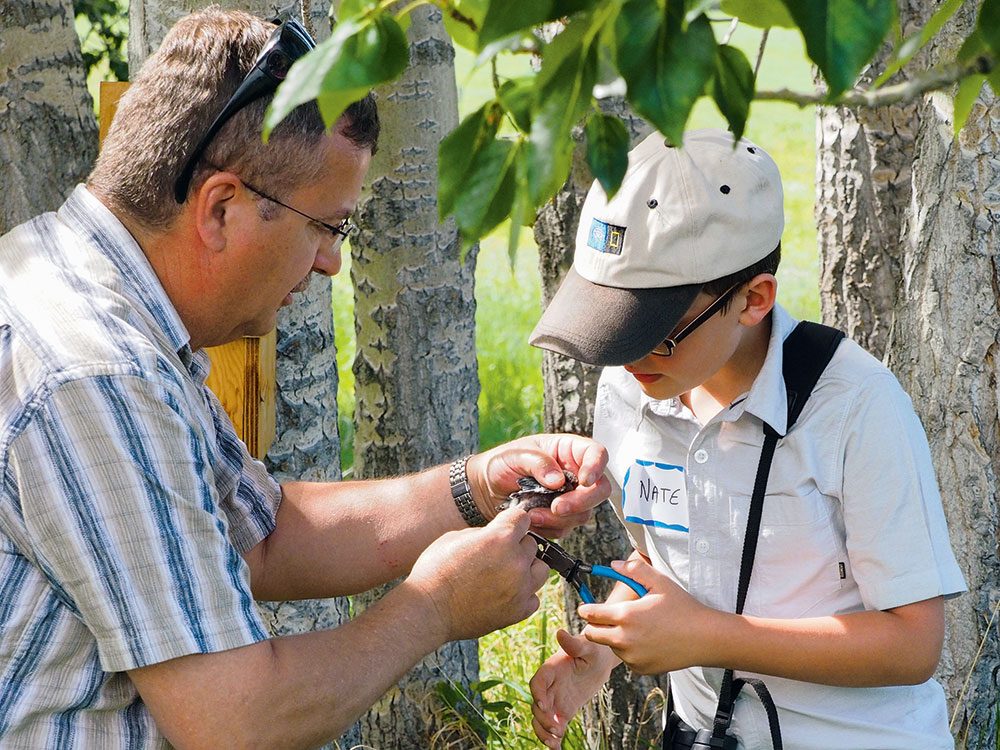
Sharing my passion for mountain bluebirds
Over the years, my boxes have housed other species, including house wrens, chickadees and even flying squirrels. It’s like opening a Christmas present each time a box is checked!
Another benefit of this passion is sharing it with others. Friends, neighbours, school children and family members have all witnessed how patient these species are. My wife, Veronica, enjoys tagging along to photograph them. Our six grandchildren are now old enough to appreciate this wonder of nature and enjoy accompanying us. Hopefully, one of them will take over the trail when my knees can no longer keep up with my heart.
Check out more beautiful Canadian birds captured on camera.